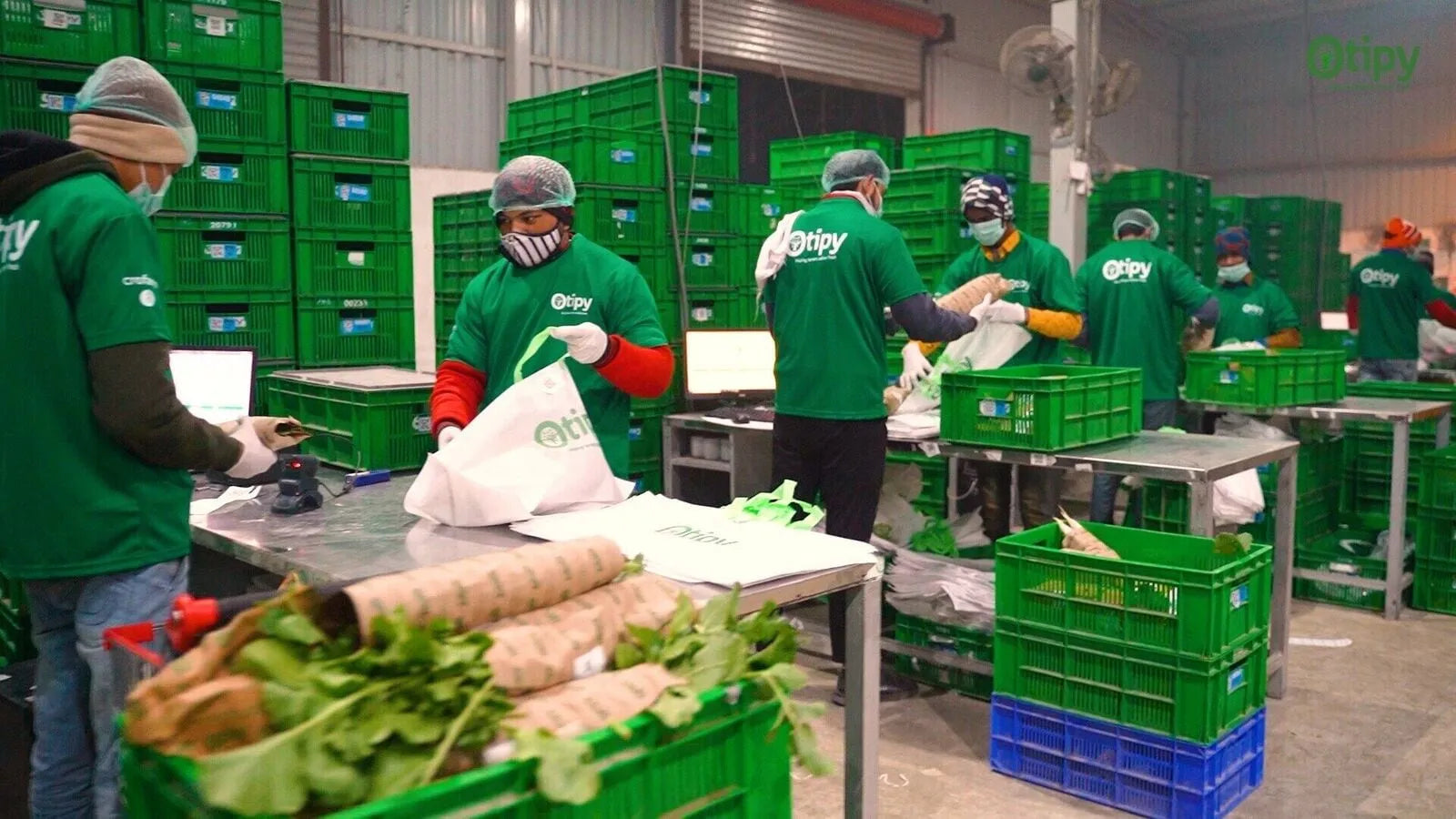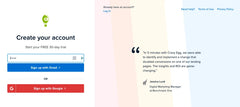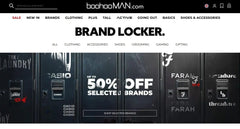
The Rise and Fall of Otipy: What Went Wrong in the Fresh Produce Startup
Table of Contents
- Key Highlights:
- Introduction
- The Genesis of Otipy
- Operational Innovations
- The Impact of Quick Commerce
- Cash Flow Challenges and Closure
- The Financial Landscape
- The Aftermath: Investor Reactions and Market Reflections
- Lessons Learned from Otipy’s Journey
- FAQ
Key Highlights:
- Otipy, a fresh produce startup founded in 2020, rapidly scaled its operations, delivering thousands of orders daily, but ultimately shut down in May 2025 due to cash flow issues.
- The company's innovative approach aimed to reduce wastage and improve the supply chain by sourcing directly from farmers, yet it struggled to secure additional funding amid rising competition from quick commerce platforms.
- Despite promising growth metrics, Otipy faced challenges in managing corporate costs and investor confidence, leading to its abrupt closure.
Introduction
The story of Otipy encapsulates the volatile nature of the startup ecosystem, particularly within the agri-tech sector. Founded by Varun Khurana in early 2020, Otipy promised to revolutionize the fresh produce market in India by creating a direct link between farmers and consumers. This model aimed not only to enhance the quality of fresh fruits and vegetables but also to minimize wastage—a significant issue in the Indian agriculture supply chain. Yet, despite its initial successes and a surge in investment, Otipy’s journey took a dramatic turn when it ceased operations in May 2025. This article delves into the factors that contributed to Otipy's rise and its eventual downfall, shedding light on the challenges faced by agri-tech startups in a rapidly changing market.
The Genesis of Otipy
Varun Khurana's entrepreneurial journey began with a significant pivot after selling his grocery delivery startup, MyGreenBox, to Grofers (now Blinkit) in 2015. His experience at Grofers revealed a crucial insight: while fresh produce accounted for a mere 2% of sales, it generated a significant portion of customer complaints. This paradox intrigued Khurana and motivated him to explore the fresh produce sector further.
The opportunity presented itself clearly: the fresh produce supply chain was fraught with inefficiencies and waste. Farmers often sold their products at a fraction of the retail price, while consumers faced inflated costs and quality issues. By eliminating intermediaries and forging direct relationships with farmers, Khurana envisioned a high-margin business model that would benefit all stakeholders involved.
In 2020, amid the pandemic’s upheaval, Khurana launched Otipy. The timing was fortuitous; a shift in consumer behavior towards online grocery shopping created a fertile environment for growth. Over the next two years, Otipy attracted substantial venture capital, raising $44.2 million from various investors, including WestBridge Capital and Inflection Point Ventures.
Operational Innovations
Otipy's operational strategy was designed to tackle the unique challenges of the fresh produce market. The company focused on limiting wastage, a common issue in agriculture where unsold products often lead to significant losses. By implementing a demand forecasting system, Otipy harvested fruits and vegetables based on actual consumer orders, reducing wastage to less than 3% of sourced produce.
Moreover, Otipy established a traceability system that allowed customers to track their purchases back to the farms, ensuring transparency and accountability in the supply chain. This innovative approach not only enhanced product quality but also built consumer trust—a crucial factor in a market where freshness and safety are paramount.
At its peak, Otipy was delivering approximately 30,000 orders each morning in major metropolitan areas like Mumbai and the National Capital Region. With annual revenues increasing by 50% from ₹115 crore to ₹172 crore between 2022-2023 and 2024-2025, the startup appeared well-positioned for continued growth. However, the underlying financial pressures and market dynamics would soon prove to be insurmountable.
The Impact of Quick Commerce
As Otipy thrived in its niche, a new wave of quick commerce platforms began to reshape the grocery delivery landscape. Companies like Zepto and Blinkit offered ultra-fast deliveries, often within 10 minutes, changing consumer expectations. This shift posed a significant threat to Otipy, which required customers to place orders before midnight for next-day delivery. The perceived inconvenience of Otipy’s model, coupled with the rapid rise of competitors, began to erode investor confidence.
Khurana acknowledged in communications to investors that the emergence of quick commerce disrupted the funding landscape, making it increasingly difficult for Otipy to secure the necessary capital to continue operations. While Otipy had managed to reduce its cash burn from ₹90 crore to ₹35 crore, the company's financial health remained precarious.
Cash Flow Challenges and Closure
On May 17, 2025, Otipy abruptly ceased operations after a critical $10 million funding round fell through. The anticipated investment from a family office did not materialize, and existing investors hesitated to inject further capital amid growing competition. Khurana's email to stakeholders reflected a deep sense of commitment, yet an acknowledgment of the harsh reality: “continuing without fresh capital is simply not feasible.”
The closure did not stem from a lack of consumer demand; rather, it was the shifting investor sentiment towards quick commerce that triggered a drastic change in Otipy’s fortunes. As the startup struggled to maintain cash flow, it became evident that the operational costs—primarily associated with a high-caliber leadership team—were unsustainable.
The Financial Landscape
Despite Otipy’s operational successes, the financial model struggled to align with market expectations. The company's leadership costs were substantial, with top executives drawing salaries ranging from ₹70 lakh to ₹1 crore annually, alongside a significant outlay for additional staff. This corporate structure contributed to an annual expenditure of approximately ₹18 crore, which accounted for nearly half of Otipy’s losses in the previous fiscal year.
An advisor at a venture capital firm involved with Otipy remarked on the paradox: despite positive operational metrics, the startup could not recover these exorbitant corporate costs. The investor landscape was unforgiving; even startups with worse economics were attracting capital, illustrating the unpredictable nature of investor behavior in the tech sector.
The Aftermath: Investor Reactions and Market Reflections
The response from Otipy’s investors was mixed. While some early backers viewed the closure as a significant write-off, others noted that they had managed to exit with profits, having sold portions of their stakes at higher valuations earlier. Inflection Point Ventures, for instance, reported that despite Otipy’s closure, their previous investments had yielded returns, allowing them to recover their capital.
The abrupt end of Otipy prompted discussions on the challenges faced by agri-tech startups in India. With an influx of speculative capital in previous years, many startups expanded rapidly without solidifying their financial foundations. Otipy’s experience serves as a cautionary tale about the need for sustainable growth strategies and the importance of adapting to market dynamics.
Lessons Learned from Otipy’s Journey
Otipy’s rise and fall offer critical insights into the agri-tech landscape and the broader startup ecosystem. Here are some key lessons learned:
1. The Importance of Adaptability
As consumer preferences evolve, startups must remain agile and responsive. Otipy’s traditional model struggled to compete with the rapid delivery services offered by quick commerce platforms. Startups must continuously assess market trends and adapt their offerings to meet changing consumer needs.
2. Financial Prudence is Key
While scaling operations is essential, managing costs effectively is equally important. Otipy’s high corporate costs ultimately became unsustainable, highlighting the need for startups to maintain a balanced approach to growth and expenditure.
3. Investor Confidence is Fragile
The investor landscape can shift rapidly based on market conditions. Otipy’s experience underscores the importance of maintaining strong investor relations and demonstrating consistent growth to secure funding during challenging times.
4. Building a Sustainable Supply Chain
Innovations that enhance efficiency and reduce waste can create significant value. Otipy’s focus on traceability and demand-driven harvesting was commendable, but ensuring that these practices are financially viable is crucial for long-term success.
5. The Role of Competition
Understanding the competitive landscape is vital. The emergence of quick commerce platforms reshaped consumer expectations and funding opportunities for Otipy. Startups must be vigilant and prepared for competitive threats that can disrupt their business models.
FAQ
What led to Otipy’s closure? Otipy closed due to cash flow challenges exacerbated by the failure to secure a crucial funding round and increasing competition from quick commerce platforms.
How did Otipy manage to grow so rapidly? Otipy leveraged a unique operational model focused on reducing wastage and enhancing supply chain efficiency, which attracted significant venture capital investment during a favorable market period.
What lessons can other startups learn from Otipy? Startups can learn the importance of adaptability, financial prudence, investor relations, sustainable practices, and awareness of competitive dynamics.
Were there consumer complaints after Otipy’s closure? Yes, there were reports of consumer complaints regarding unspent wallet balances, which the founder stated would be addressed within 90 days from the shutdown.
Is the agri-tech sector still viable for startups? While the agri-tech sector has significant potential, startups must navigate challenges such as competition and financial sustainability to succeed in this rapidly evolving landscape.
Power your ecommerce with our weekly insights and updates!
Håll dig uppdaterad om vad som händer i handelsvärlden
E-postadress





